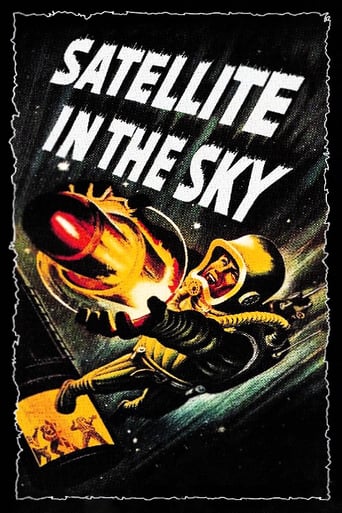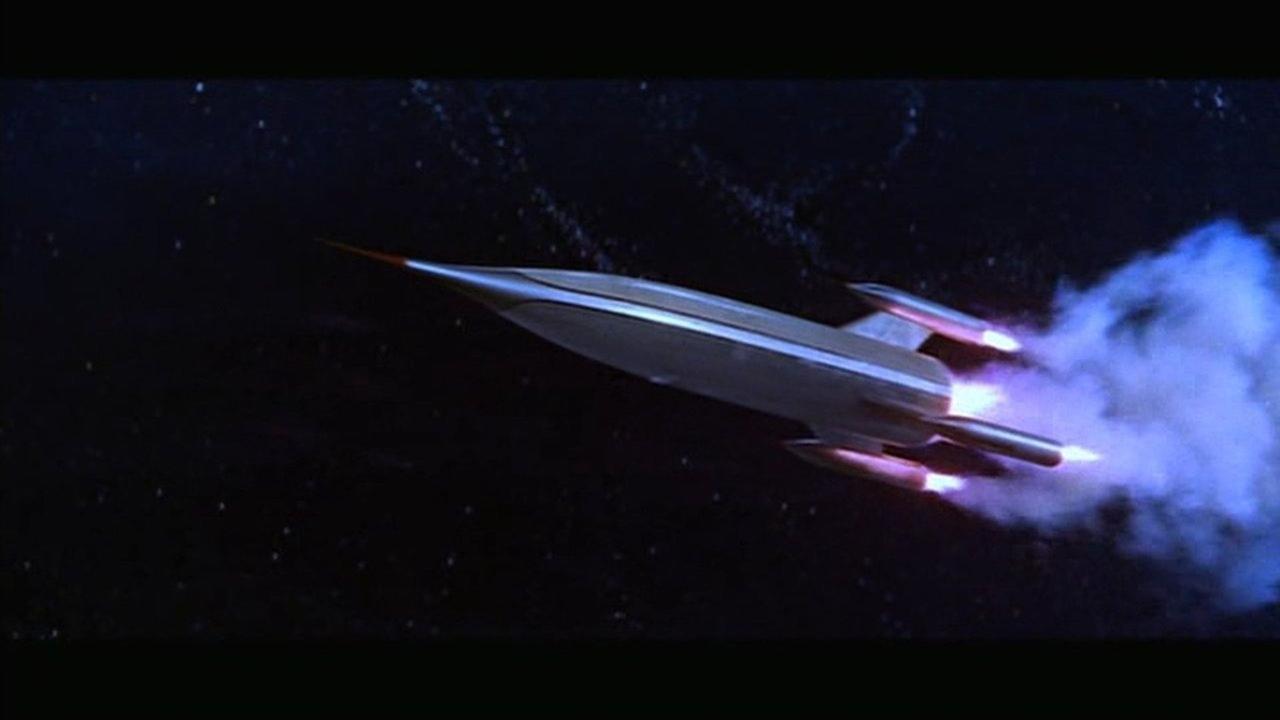kennethfrankel
As mentioned by others, the early sci-fi movies seem to have the idea that when you go up a bit you leave the Earth's gravity field. No. What about the Moon? Isn't it held by our gravity? Do the tides just appear by themselves? Rider to the Stars (1954) also had that gravity concept. These movies confuse a lack of gravity with an orbit where you can go 18,000 mph just outside the Earth's atmosphere. You are falling and you miss the Earth. Why do the astronauts float in the Space Shuttle? There is no gravity, all the kids say. The other issue is the statement made in the movie that outside the atmosphere of the Earth magnetic forces are much stronger. It may be true that a magnetic force is attenuated by something placed between 2 magnets. Even a piece of cardboard should reduce it a bit, and air might reduce it a tiny bit, but I never heard of magnetic forces increase much in a vacuum. The writers seem to get confused. So what if 2 guys grabbed the bomb, used the jet packs to push it away, and then zipped back to the ship. A small poof of the rocket motor should get the ship further away. They seemed to try to push the bomb once but it drifted slowly back. They could have a rope attached to themselves and the ship if necessary. The bomb would have to be really highly magnetized for it to act like it did. The explanation was that the ship is really big compared to the bomb. I can't believe that in 9 hours they could not have come up with a simple plan - steer bomb a distance away, zip back, use low thrust to get the ship further away, then pedal to the metal. The last point - the bomb guy freaked out when they were going up. He appeared to be middle aged, not in great shape, and never had the slightest training or any kind of medical clearance.
Hitchcoc
We can forgive them because it was 1956, but this is a real pedestrian space yarn with a lot of holes in it. It's in the middle of the Cold War and the development of a rocket to the stratosphere is commandeered to test a bomb-to-end-all-bombs. This will create what we in the late 20th Century called detente. Even the crew is ignorant of the whole process, but some government zealots go off half cocked with little regard for the dangers, in order to scare the world out of developing any further weapons, fighting any future wars. Of course, the whole thing has to go off just right, and we know it isn't. Once again we have the obligatory pushy female (a reporter who stows away on the rocket) who pushes everyone's buttons. Just to show you what a progressive time she lives in, she ends up making coffee and sandwiches for the guys. There is the idea that science is advancing too fast. In the end, this is a movie about dealing with the realities of miscalculation. The slipshod methods make this less than it could have been. It does have decent special effects or its time.
roadterm-1
Wowzers! A fun movie if you can stand the British pacing of the movie. The opening shots of the A.V. Roe Vulcan and the Fallon Swift are first rate aerial photography.Special effects are on par with some of the best 50s era Sci-fi films. A real pointy nosed space ship. Space suits are pretty good for the era. The story line is the usual Hollywood anti-bomb drivel. Interpersonal relationships are stiff and two-dimensional.Big clunky gages, pipes and levers in the Stardust (name of the space rocket) will remind you of the Golden Age of Steam in Brittan.This picture is an excellent example of just how limited our knowledge of outer space and space flight. Real kick the tires and light the fires space flying All in all, if you are a 50s Sci-Fi movies you will want to add Satellite in the Sky to your collection. Real Science fiction before it was spoiled by real science facts...Satellite in the Sky was part of a double feature DVD from Warner Home Video. A B-Movie two-fer.... The second movie on the DVD is another 1956 Sci-Fi pic, World Without End.
jim riecken (youroldpaljim)
This was the first 1950's British science fiction intended to be a major item. The film is in color and cinemascope, has decent special effects and production values and the film takes its subject matter seriously; space travel and nuclear testing. When this film was released in the United States by Warner Brothers in 1956, it was marketed as a major item with a big ad campaign. However, most reviews at the time were not favorable, and the film did not do as well at the box office as Warner Brothers had anticipated. The film rarely turned up on television and remains largely unknown to all but 1950's science fiction completests.It is no wonder really. Despite good production values, a good budget, some interesting art direction and a serious attitude taken by the films makers, SATELLITE IN THE SKY is mostly too talky and static to interest most mainstream movie viewers. The film is overall not bad, but it fails to generate little more than mild interest and at best moderate enthusiasm.Note: When this film first came out, several reviewers remarked favorably about the films color process and use of cinemascope. I missed this film when it used turn up occasionally on late night T.V. back in seventies. I only recently saw this film for the first time on video, and wouldn't you know it, all video copies are in black and white and in incorrect aspect ratio!! I would really would like to see a color and letter boxed video version.


 AD
AD


